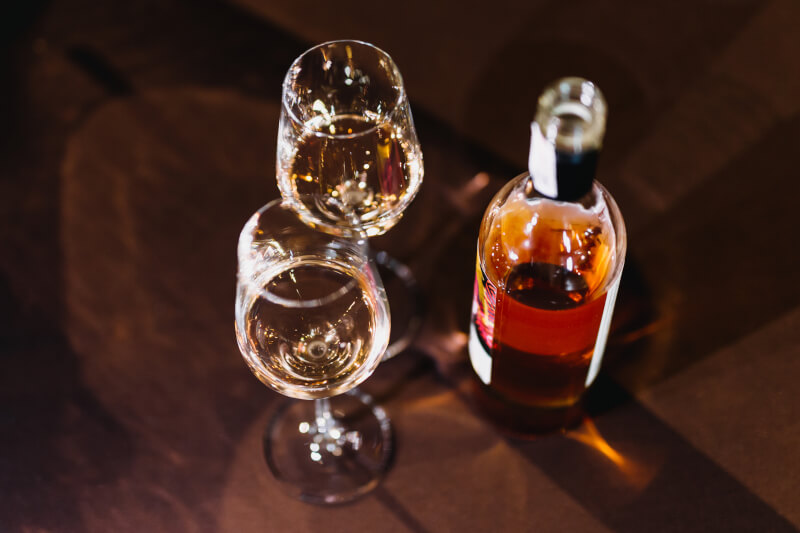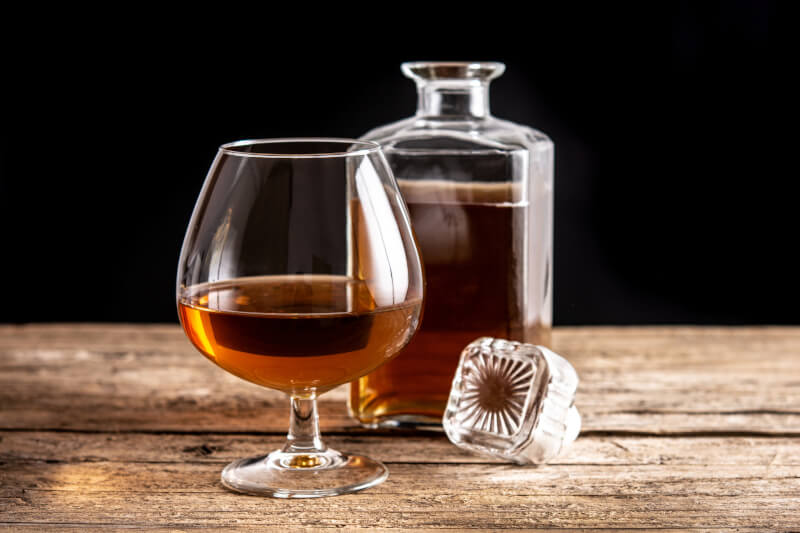The connection between Scotch whisky and sherry, Spain’s famous fortified wine, is just one example of the complexity and depth of the Scotch whisky world. Let’s dig into the history between the two and figure out why certain whiskies have such distinctive sherry flavours.
The History of Sherry & Whiskey
Scotch and Spanish beverages share a rich history, despite their seemingly disparate origins. Sherry’s popularity in Britain dates back to the Elizabethan era. In the nineteenth century, the British Isles received an astonishing 60,000 barrels of sherry annually.
Then whisky came along. Whisky distilleries at the time were actively seeking better ways to preserve their product. When those who have let their spirits mature come to the empty sherry casks, they will make a remarkable discovery. Whisky, fortified with the sherry’s aftertaste, went from being a fiery liquid to a complex beverage. It could be a richly sweet Pedro Ximénez or the dry and nutty Oloroso, whisky took on a whole new flavor character depending on what kind of sherry had been stored in the cask previously. This gave rise to the current matured Scotch, which has become the industry standard.
The Time It Changed
Time changed, though, and the British began losing interest in sherry. For whisky makers, this presented an obstacle. But just as one opportunity ended, another one began. Scottish distilleries needed to find a new method of aging to compete with the booming American bourbon business, which only uses oak casks once.
The effect of the sherry, though, lingered. A large percentage of the 20 million casks currently aging Scotch whisky can trace their roots back to sherry. After 1981, the business reacted by looking for specifically made Spanish casks because the traditional transport casks were no longer in use. Sherry would age in these casks constructed from European or American wood for up to three years before they were shipped north to be used to age Scotch.
This is not all, though. The solera system, which is fundamental to the sherry maturation process, also provides the whisky sector with its unique, aged casks. These barrels are quite old, therefore they must be restored with care. While they do an excellent job of imparting sherry’s signature flavors, the seasoned casks are better suited to add distinctive wood notes.
Striking The Optimal Blend

Using sherry casks is more involved than just dropping the spirit in and waiting for it to age in whisky. Such skill requires finesse. Many people think that sherried whiskies represent the pinnacle of properly aged Scotch in terms of flavor. The future of the whisky and sherry industries is unclear due to their divergent development rates. What is the jovial suggestion? Whisky drinkers might benefit from developing a taste for sherry.
The Nitty Gritty
The sizes of Sherry casks range from:
- 500-liter capacity sherry butts
- 600 liters for a Gorda or bodega butt; 450 liters for a sherry puncheon
Products that Go Well with Sherry
Some well-known brands that have taken to the sherry-infused profile are:
-
Glenfarclas
Profile: Glenfarclas, a family-owned distillery, is renowned for its consistent love for sherry casks. Their whiskies often exhibit:
- Fruity Overtones: Think of dark cherries and ripe red apples.
- Spice Trails: A gentle hint of nutmeg and soft white pepper can often be detected.
- Sweet Notes: The unmistakable touch of honey and golden syrup.
- Woody Undertones: An elegant oakiness, adding structure to every sip.
The experience of sipping Glenfarclas is akin to walking through a dense orchard during harvest season, with a sprinkle of spices in the air.
-
The Dalmore
Profile: The Dalmore’s relationship with sherry casks has crafted a distinct palette that’s both bold and refined.
- Citrus Highs: Orange marmalade shines brightly in many of their expressions.
- Chocolaty Depth: A luxurious taste, reminiscent of dark chocolate.
- Berry Touch: Raspberries and blackberries, adding a touch of tartness.
- Exotic Spices: Cinnamon and cloves lend warmth.
With The Dalmore, it’s like indulging in a rich dessert at an upscale bistro, with each bite revealing a new flavor.
-
The Macallan
Profile: The Macallan, a heavyweight in the whisky world, showcases the art of maturation with its dedication to sherry-seasoned oak casks.
- Dried Fruits: A medley of sultanas, figs, and apricots.
- Nuts About It: Hints of roasted almonds and toasted hazelnuts.
- Vanilla Sweetness: A soft, creamy vanilla essence.
- Subtle Florals: A whiff of spring blossoms and lavender.
When you take a moment with The Macallan, it feels like you’re in an old library, leather-bound books around, with a bowl of dried fruits and nuts on a nearby table.
-
Tamdhu
Profile: Tamdhu, while perhaps less recognized than the others, holds its own with its sherry-heavy maturation approach.
- Creamy Toffee: Sweet and buttery, like a toffee pudding.
- Fruit Medley: Plums, raisins, and a touch of banana.
- Earthy Notes: A sense of fresh soil and autumn leaves.
- Zesty Surprise: Occasional bursts of lemon zest.
With Tamdhu, you’re on a serene riverside picnic, a basket of fruits at your side, and the earth beneath, grounding your experience.
The ‘Sherry Triangle

The ‘Sherry Triangle’ in Cádiz, southern Spain, is where true sherry is produced. Barrels that formerly contained other fortified wines may sometimes be referred to as “sherry casks” when discussing whisky.
Unique Terroir of the Triangle
A Medley of Soil Types:
One of the most striking features of the Sherry Triangle is its diverse soil types. The region boasts three main types of soil: albariza, Barros, and arenas. Out of these, albariza is considered the star, rich in limestone, and adept at retaining moisture, which becomes particularly valuable during the hot summers. This type of soil imparts distinctive mineral qualities to the grapes, which in turn, influences the flavor profiles of sherries matured there. When whisky is matured in casks that once held sherry from these grapes, subtle hints of these mineral characteristics can sometimes be detected.
Climate’s Role:
Situated by the Atlantic Ocean, the Sherry Triangle enjoys a unique microclimate. The moist winds from the sea, known as “Poniente,” coupled with the hotter and drier “Levante” winds from the east, create an environment that’s ripe for aging sherry. This duet of winds ensures the development of “flor” – a layer of yeast that forms on the surface of the sherry while aging, which prevents it from oxidizing too rapidly. This process contributes to the fresh, nutty characteristics of certain sherries, which, when transferred to whisky, can introduce layered complexities.
The Authenticity and Misconceptions Around ‘Sherry Casks’
Evolution of the Term:
When we talk about ‘sherry casks’ in whisky, it’s easy to think that every cask previously held the authentic sherry from the famed Triangle. However, the waters are a tad murkier. Due to the sheer demand for these casks in the whisky industry, barrels that held other fortified wines often get dubbed as ‘sherry casks,’ even if they never touched the genuine article. This can lead to a broad spectrum of flavor notes in whiskies.
Why Authenticity Matters:
Real sherry casks, those that held the beverage from the Sherry Triangle, come with a legacy. Each cask holds the memory of the unique terroir, climate, and meticulous aging process of the region. When whisky is introduced to these casks, it isn’t merely interacting with the residues of fortified wine; it’s dancing with the history and essence of the Sherry Triangle. While barrels from other regions might impart delicious flavors, they might lack the depth and nuances of genuine sherry-aged whiskies.
It’s like peeling an onion to discover the sherry influence in whisky. The more you peel back the layers, the more you see the complex interweaving of time, style, and skill. The next time you taste a dram with a hint of sherry, you’ll have a better understanding of its origin.

